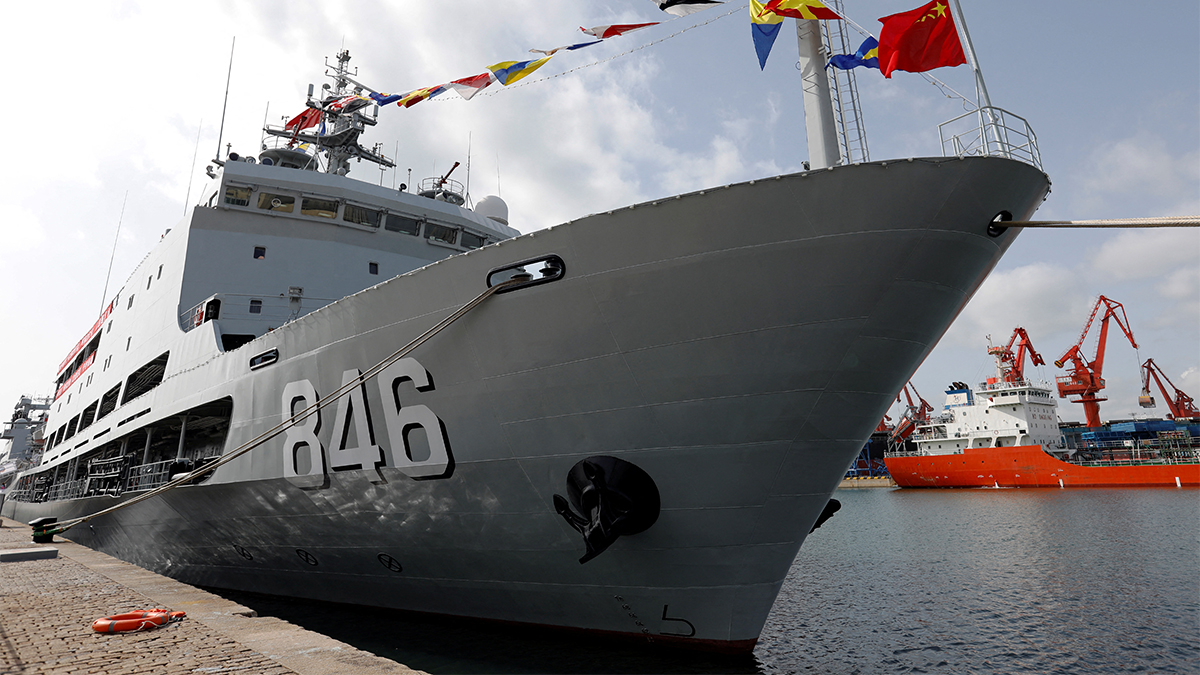China continues to intensify arms race, particularly with the United States, in the Indo-Pacific region. Its rapid military buildup has raised concerns for the US and its allies in the region. Recent developments indicate that Beijing is aggressively expanding its naval and aerial capabilities, challenging the US’s traditional influence in the region.
Two key aspects of this expansion include the deployment of the high-altitude WZ-9 drone and the construction of a nuclear-powered supercarrier. These moves come amid China’s growing assertion for control, particularly, in the South China Sea. Chinese ambitions undermine the existing balance of power. The Washington-based Center for Strategic and International Studies has pointed out that China is working to develop a blue-water navy capable of projecting power far beyond its shores.
WZ-9 drone and the future of aerial surveillance
China’s deployment of the WZ-9 drone is a concerning development in its efforts to expand aerial surveillance and reconnaissance. This high-altitude unmanned aerial vehicle (UAV) is equipped with sensors designed to detect stealth aircraft and track enemy movements. While the US has long relied on advanced drone technology for intelligence gathering, the introduction of the WZ-9 indicates that China is trying to reduce its technological gap.
A report by The War Zone, cited by the South China Morning Post, states that the WZ-9 is expected to operate alongside the WZ-7, another high-altitude drone. Together, these UAVs strengthen China’s surveillance network, which could be used to monitor US and allied aircraft, including stealth fighters like the F-22 and F-35. The Pentagon has acknowledged the growing risks posed by China’s expanding surveillance system, which incorporates AI-driven analysis and electronic warfare to interfere with adversary operations.
The presence of the WZ-9 in the South China Sea raises serious concerns for countries like Japan, Australia and the Philippines. These nations depend on US intelligence-sharing, but China’s increasing drone fleet could complicate reconnaissance efforts in the region.
Impact Shorts
More ShortsThe European Union is also concerned about China’s growing military capabilities. Nato leaders have stressed the need to closely monitor Beijing’s actions. As China expands its navy, it could disrupt the global balance of power, prompting new alliances and security strategies to counter its influence. The Council on Foreign Relations has pointed out that China’s military expansion is not just about regional control but also part of a broader effort to challenge Western leadership on the global stage.
China’s nuclear-powered supercarrier?
China is pushing ahead with major naval advancements, raising concerns for the US and its allies. According to a report by Matthew Bodner and Keir Simmons in NBC News, satellite images analysed by the US Naval Institute suggest that Beijing is working on a nuclear-powered supercarrier, tentatively named the Type 004. If completed, this warship would mark a significant expansion of China’s naval reach. So far, China’s aircraft carriers have been conventionally powered, which limits their operational range and endurance compared to US carriers.
Unlike its previous carriers, the Type 004 is expected to have an electromagnetic catapult launch system, similar to the US Navy’s Gerald R Ford-class carriers. This system enables the quick launch of heavier aircraft, including stealth fighters and drones, which could strengthen China’s combat and surveillance operations. The Center for a New American Security pointed out that switching to nuclear propulsion would allow China’s navy to operate for longer periods in contested waters, particularly in the Indo-Pacific.
This development comes as the US and its allies step up their naval presence in response to China’s growing maritime activities. The Pentagon’s annual report on Chinese military power has highlighted the rapid expansion of China’s navy, warning that its long-term aim is to challenge US dominance in the Western Pacific. US aircraft carriers have long been key to American military power, but China’s pursuit of nuclear-powered carriers indicates its intent to compete directly.
Implications for US military strategy
China’s development of advanced drones and a nuclear-powered supercarrier poses a serious challenge for the US and its allies. In response, Washington has been strengthening military partnerships through initiatives like Aukus (Australia, the UK and the US) and the Quadrilateral Security Dialogue (Quad). The US has also accelerated the deployment of its own unmanned systems and next-generation stealth aircraft to stay ahead technologically.
A major concern for US military planners is China’s attempt to combine its aerial and naval advancements into a single warfare strategy. The WZ-9 drone, when paired with the capabilities of the Type 004 supercarrier, could create a networked combat system. To counter this, Washington has increased military exercises in the Indo-Pacific, focussing on carrier strike group operations and intelligence-sharing with allies. The US Air Force and Navy are also investing in counter-drone technology and electromagnetic warfare to disrupt Chinese surveillance networks.
Regional and global impact
China’s development of advanced surveillance drones and a nuclear-powered supercarrier signals its geopolitical ambition to dominate global military dynamics as it rivals with the US. For Washington, these developments require adjustments in military strategy, focussing on unmanned systems, stealth technology and electronic warfare.
As China continues modernising its military, tensions in the Indo-Pacific are likely to increase with both sides working to protect their strategic interests. Experts say the next decade may be crucial for the US to maintain its military edge as it faces growing competition at sea.


)

)
)
)
)
)
)
)
)



